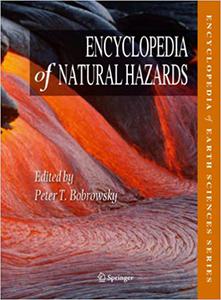
Pedro Basabe, Tom Beer, Norm Catto, "Encyclopedia of Natural Hazards"
English | 2013 | pages: 1177 | ISBN: 9048186994 | PDF | 42,5 mb
Few subjects have caught the attention of the entire world as much as those dealing with natural hazards. The first decade of this new millennium provides a litany of tragic examples of various hazards that turned into disasters affecting millions of individuals around the globe. The human losses (some 225,000 people) associated with the 2004 Indian Ocean earthquake and tsunami, the economic costs (approximately 200 billion USD) of the 2011 Tohoku Japan earthquake, tsunami and reactor event, and the collective social impacts of human tragedies experienced during Hurricane Katrina in 2005 all provide repetitive reminders that we humans are temporary guests occupying a very active and angry planet. Any examples may have been cited here to stress the point that natural events on Earth may, and often do, lead to disasters and catastrophes when humans place themselves into situations of high risk.
Few subjects share the true interdisciplinary dependency that characterizes the field of natural hazards. From geology and geophysics to engineering and emergency response to social psychology and economics, the study of natural hazards draws input from an impressive suite of unique and previously independent specializations. Natural hazards provide a common platform to reduce disciplinary boundaries and facilitate a beneficial synergy in the provision of timely and useful information and action on this critical subject matter.
As social norms change regarding the concept of acceptable risk and human migration leads to an explosion in the number of megacities, coastal over-crowding and unmanaged habitation in precarious environments such as mountainous slopes, the vulnerability of people and their susceptibility to natural hazards increases dramatically. Coupled with the concerns of changing climates, escalating recovery costs, a growing divergence between more developed and less developed countries, the subject of natural hazards remains on the forefront of issues that affect all people, nations, and environments all the time.
This treatise provides a compendium of critical, timely and very detailed information and essential facts regarding the basic attributes of natural hazards and concomitant disasters. The Encyclopedia of Natural Hazards effectively captures and integrates contributions from an international portfolio of almost 300 specialists whose range of expertise addresses over 330 topics pertinent to the field of natural hazards. Disciplinary barriers are overcome in this comprehensive treatment of the subject matter. Clear illustrations and numerous color images enhance the primary aim to communicate and educate. The inclusion of a series of unique "classic case study" events interspersed throughout the volume provides tangible examples linking concepts, issues, outcomes and solutions. These case studies illustrate different but notable recent, historic and prehistoric events that have shaped the world as we now know it. They provide excellent focal points linking the remaining terms in the volume to the primary field of study. This Encyclopedia of Natural Hazards will remain a standard reference of choice for many years.



